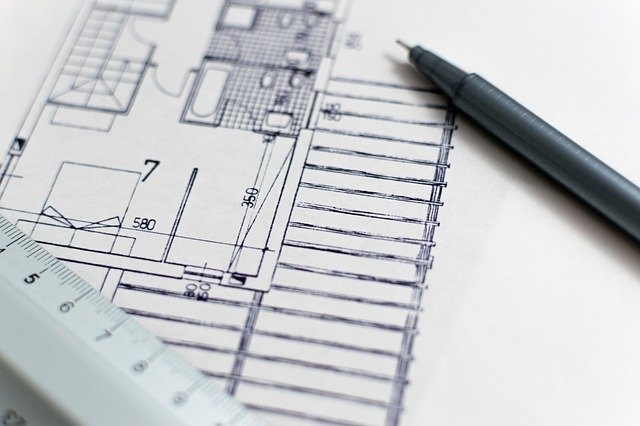The task of interior design professionals is to create beautiful, comfortable, and functional spaces. A true professional does not create a picture for a catalog, but a space that performs its main function with maximum comfort for people. In offices it is convenient to work, in cafes, it is pleasant to spend time, in apartments to customers and their families to live comfortably.

The designer understands that a teenager needs a separate room decorated by his tastes, that a beautiful glossy surface in the kitchen can bring too much trouble for the hostess – in short, he “sees” the interior in perspective understands how each item and material for decoration will behave in use.
There are no more writing research papers, asking to write my essay, and handing in your final paper like it was at university. Here you will be doing serious projects. Interior designer performs projects in stages:
- Meets with the client, finds out his preferences and wishes. Photographs of the room take measurements.
- Makes a scheme of utilities, if necessary, offers options for redevelopment.
- Prepares sketches of the future interior and agrees with the client.
- Selects materials and furniture draws up and agrees on cost estimates.
- Supervises the repair work, monitors compliance with deadlines and requirements assesses the quality.
Pros and cons of the profession
Below we will tell you about the advantages of the profession:
- Now there are online sites where you can study for an interior designer from scratch, without leaving home. Moreover, once you get a diploma and the right to work in the specialty, you can improve your skills through webinars and lectures by leading masters from around the world. Not every profession has as many materials available.
- Minimal requirements for educational documents. Employers are much more interested in your portfolio and experience than “crusts”. You can get a high-paying job with secondary vocational education or incomplete higher education.
- Huge opportunities for creative self-realization. You will always develop, learn something new and know everything about design trends.
- Good prospects, high salaries for experienced professionals.
Like any other job, an interior designer has its disadvantages:
- High competition, especially in large cities. Experienced specialists recommend occupying a specific niche to improve your chances of getting orders: for example, to deal only with the arrangement of offices or to specialize in working with young families with small budgets.
- You need to constantly keep your hand on the pulse, to follow trends in the world of design. For example, a young mother cannot go on maternity leave for three years and leave her profession completely, and then just go back to work. She will have to “catch up” with her colleagues.
- Customers are not always friendly people with excellent taste. There are difficult requests, when the client does not know what he wants, or when the husband and wife have directly opposite ideas about the ideal interior.
Remember that an interior designer is not just about aesthetics. It is important that the specialist knows the rules and regulations relating to engineering communications and redevelopment (especially when working in the historic part of town), that he knows how to negotiate and meet the clients’ expectations, and that he is guided by the client’s wishes rather than by his preferences.
Where and who can work as an interior designer
A specialist can get a job in a design studio, a company for the arrangement of residential or office space, or become a freelancer. Each option has pros and cons.
Working for a company, you:
- Will be provided with orders. You will not have to look for clients and offer services – this is the task of the sales manager.
- You will get rid of worries associated with accounting, taxes, etc.
- If you are lucky, you will be able to work with more experienced professionals and learn interior design from them, adopting valuable experience.
- You will get less than when working directly with the client, because the money from the orders goes to the payment of taxes and rent of premises, on the salaries of employees (including accountants, management, managers).
- You won’t be able to choose your projects: you will have to work with what you have.
Working as a freelancer, you:
- Get to choose interesting projects. You will not have to work with clients with whom, for whatever reason, you do not develop relationships, and take projects that take too much time, energy and nerves, but bring little money. This will help you avoid professional burnout.
- You will be able to earn more than when working in a company, but only when you become a sought-after specialist who does not sit without orders.
- You will be forced to look for orders yourself. The more experience and an impressive portfolio, the easier it is to do it – over time, the customers will find you. But at the start of your career, it will not be easy to find clients. You will have to spend part of your time on advertising and promoting yourself as a specialist.
- You will have to deal with the tax and regulatory authorities yourself. You can hire an outsourced accountant for this, but you will have to pay for his services.
Career development for an interior designer is simple: either move to a management position and become a leading specialist or build a good reputation and receive expensive orders from wealthy clients, including banks and trading companies.
Final words
In this article, we looked at who an interior designer is, what their main responsibilities are, the advantages and disadvantages of the job, and where you can work. What does it take to really become a high-demand professional? The main thing is that you have to determine your vector of development and study what you like, then this job will bring you not only money but also pleasure.





